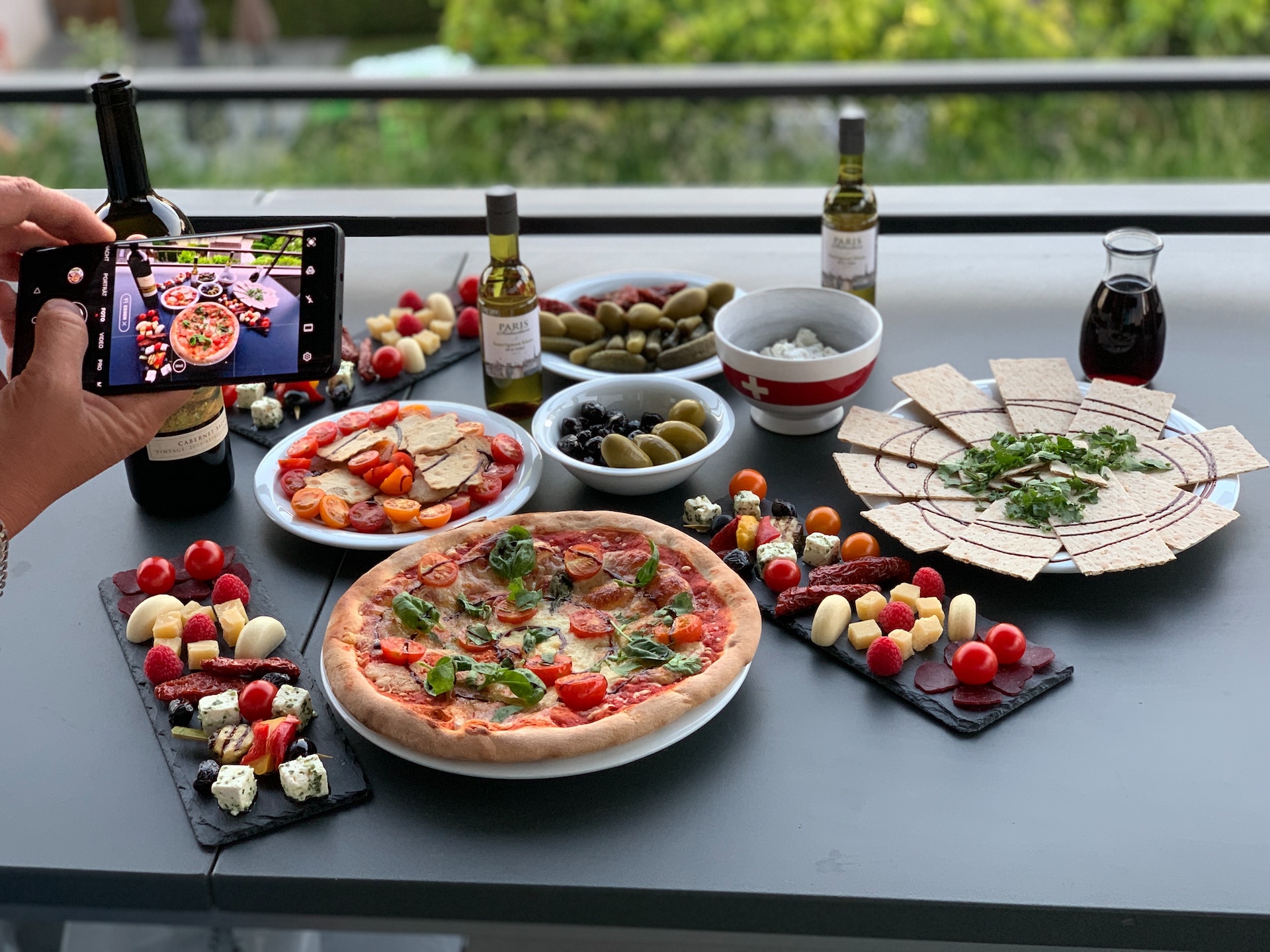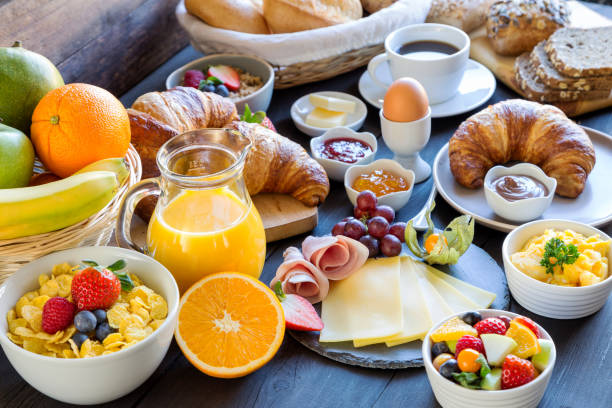Food blogging has experienced a meteoric rise as a popular online trend, revolutionizing the way people interact with and appreciate food. This phenomenon has had a profound influence on culinary experiences, allowing individuals to share their passion for food and inspire others to try new dishes, flavors, and techniques. Through the power of words, captivating visuals, and shared experiences, food blogging has transformed the way we approach and perceive our meals.
Table of Contents
How to do Food Blogging

Identifying Your Niche
With the vast array of food blogging niches available, it’s essential to explore and find the one that aligns with your passion and unique perspective. Whether it’s focusing on vegan cuisine, gluten-free recipes, or international flavors, identifying your niche helps you carve out a specific identity in the blogosphere. Thorough research into your target audience and competition will enable you to tailor your content to meet the demands and expectations of your future readers.
Benefits of Food Blogging
Being a food blogger offers numerous benefits that extend beyond the realm of personal satisfaction. It allows aspiring culinary enthusiasts an opportunity to establish a personal brand and showcase their unique perspectives and expertise to a wide audience. By sharing their knowledge, tips, and tricks, food bloggers become trusted sources of information in the gastronomic world. Additionally, food blogging opens doors to exciting collaborations and monetization opportunities, turning a beloved hobby into a potentially lucrative passion.
Building Your Food Blog from Scratch
When building your food blog from scratch, several important considerations come into play. Start by selecting a memorable and relevant domain name that reflects your blog’s essence and resonates with your target audience. Next, choose a suitable blogging platform and reliable hosting service to ensure a smooth and uninterrupted user experience. Finally, design your website with both aesthetics and user-friendliness in mind, making sure it is visually appealing and easy to navigate.
Crafting Compelling Content
Compelling content is the lifeblood of any successful food blog. To captivate and engage your readers, it is crucial to develop a consistent writing style and tone. Whether you choose an informative and instructional approach or an entertaining and humorous one, your unique voice should shine through in every post. Additionally, investing time and effort in creating engaging recipe posts and food reviews will bring your culinary experiences to life. Incorporating high-quality photographs and videos elevates the visual appeal of your blog, enticing readers to linger longer and try your mouthwatering creations.
Tips for Food Blogging
Learn in detail about food photography

Mastering Food Photography & Styling
Aesthetically pleasing food photography plays a pivotal role in enticing readers to try your recipes and visit your blog repeatedly. Mastering lighting techniques is essential for capturing appetizing food shots that make taste buds tingle. Whether utilizing natural light or artificial sources, understanding how lighting affects colors, textures, and shadows will enhance the visual appeal of your photographs. Furthermore, incorporating styling tips to create visually appealing food compositions will elevate your photos to the next level. Post-processing and editing techniques, such as adjusting brightness, contrast, and sharpness, will add that final touch of visual perfection.
Effective SEO and Blog Promotion Strategies
Creating exceptional content is just the first step in food blogging success; effectively promoting your blog is equally important. Optimizing your posts for search engines through strategic use of keywords and meta tags will boost your visibility and organic traffic. Social media marketing also plays a crucial role in expanding your blog’s reach. Leveraging platforms such as Instagram, Facebook, and Pinterest allows you to engage with a wider audience and attract followers who resonate with your culinary creations. Building an engaged community through email newsletters fosters a loyal readership, ensuring your blog stays at the forefront of readers’ culinary adventures.
Collaborating with Brands and Restaurants
Collaborating with brands and restaurants provides food bloggers with exciting opportunities to expand their reach and harness new experiences. Approaching potential sponsors and partners requires a tactful and thoughtful approach, showcasing the value you can bring to their brand. By creating mutually beneficial collaborations, you can foster long-term relationships that benefit both parties. However, it’s important to approach sponsored product and service reviews ethically, ensuring transparency and honesty in your assessments. Necessary in Food blogging
Monetization Opportunities for Food Bloggers

Turning your food blog into a source of income is a goal most aspiring food bloggers aspire to achieve. Displaying advertisements on your blog is a common way to generate revenue. Selecting relevant and high-quality ads that align with your blog’s content and readers’ interests is crucial to maintaining authenticity. Another avenue for monetization is creating and selling your own e-products such as cookbooks, meal plans, or culinary courses. Participating in affiliate marketing programs, where you earn a commission through promoting products or services, is yet another viable option for monetizing your food blog while maintaining integrity.
Building a Social Media Presence
In today’s interconnected world, social media is an invaluable tool for enhancing your blog’s visibility and attracting a wider readership. Leveraging platforms such as Instagram, Twitter, and YouTube allows you to showcase your culinary creations and interact with like-minded food enthusiasts. Developing a cohesive brand identity across social media platforms ensures consistency, reinforces your unique voice, and helps establish your status as an authority in the culinary world. Engaging with followers and building a loyal community creates a supportive and interactive environment that fosters long-lasting connections and enhances your blog’s reach.
Connecting with Other Food Bloggers and Influencers
Finding and connecting with other food bloggers and influencers is essential for building a network of support, inspiration, and growth. Joining online food blogging communities and forums provides opportunities for knowledge-sharing, brainstorming, and encouraging one another. Attending industry events and workshops allows you to learn from industry leaders, gain insights into the latest trends, and forge meaningful connections. Collaborating with other bloggers for cross-promotion exposes your blog to new audiences, expanding your reach and enriching your culinary journey.
Expanding Your Reach through Guest Blogging
Guest blogging is a powerful strategy to expand your reach and share your expertise on other relevant platforms. By contributing to established websites, you can tap into existing audiences and showcase your culinary prowess. Additionally, guest blogging allows you to build valuable backlinks, which not only direct traffic to your blog but also improve your blog’s visibility in search engine rankings. Establishing credibility through guest blogging is instrumental in growing your audience and establishing yourself as a reputable authority in the food blogging community. Must in Food blogging
Analyzing and Improving Blog Metrics

To measure your blog’s progress and identify areas of improvement, understanding key performance indicators (KPIs) is essential. Utilizing analytics tools enables you to track critical metrics such as traffic, engagement, and conversions. Analyzing this data-driven information empowers you to make informed decisions and implement strategies to optimize your blog’s performance. Whether it’s identifying popular content, monitoring user behavior, or assessing the effectiveness of your monetization efforts, utilizing blog metrics helps you navigate your blogging journey with clarity and purpose.
Managing Criticism and Handling Negative Feedback
As with any creative endeavor, handling criticism and negative feedback is an inevitable part of being a food blogger. It is essential to develop a resilient mindset that enables you to navigate criticism constructively. Embrace feedback as an opportunity for growth and improvement, rather than letting it discourage or derail you. Addressing negative comments and reviews professionally, with a focus on open dialogue and respectful communication, demonstrates your professionalism and commitment to quality. Ultimately, learning from constructive feedback allows you to continually enhance your blog and provides a platform for continuous improvement.
Staying Inspired and Overcoming Writer’s Block
In the ever-evolving world of food blogging, it’s crucial to stay inspired and motivated to create fresh and exciting content. Seek inspiration from culinary trends, travel experiences, cultural exploration, and personal stories. Experimenting with new recipes, ingredients, and techniques keeps your content vibrant and diverse. Writer’s block can be conquered by trying new approaches, taking breaks, or seeking inspiration from other forms of art. Remember, the key to overcoming writer’s block is to stay true to your passion and keep experimenting and creating with enthusiasm and curiosity.
Legal Considerations for Food Bloggers
As a responsible food blogger, there are several legal considerations you must be mindful of to maintain your integrity and adhere to legal requirements. When using others’ content, ensure proper copyright attribution to respect intellectual property rights. Disclosing sponsored content and affiliate links is essential for transparency and to comply with legal guidelines. Lastly, it is crucial to be aware of and adhere to health and safety regulations when providing recipes or advice that may impact readers’ well-being.
Engaging with Your Audience
Engaging with your audience fosters a sense of community and strengthens the bond between you and your readers. Promptly responding to comments and questions demonstrates your commitment to building meaningful connections and providing support. Conducting surveys and polls allows you to understand readers’ preferences and tailor your content accordingly. Creating interactive content, such as quizzes, challenges, or contests, and hosting giveaways incentivizes engagement and adds an element of fun to your blog. this is very important in food blogging
Summary
Throughout this article, we have explored the multifaceted world of food blogging, delving into the necessary steps and considerations for success. From establishing a personal brand and building a website from scratch to crafting compelling content and expanding your reach, we’ve covered it all. However, above all else, we want to emphasize the importance of passion and authenticity in food blogging. It is your unique voice and unwavering dedication to your craft that will set you apart in this constantly evolving world of culinary creativity.
FAQs (Frequently Asked Questions)
Can anyone become a successful food blogger?
While passion and dedication are necessary, with the right strategy and perseverance, anyone can carve their path towards food blogging success.
How long does it take to build a significant following?
Building a significant following takes time and sustained effort. Results vary for each individual, but patience and consistency are the keys to long-term success.
Is professional photography equipment necessary?
While professional equipment can greatly enhance the visual appeal of your blog, a lot can be achieved with a smartphone and some basic knowledge of photography techniques.
How can I monetize my food blog without compromising integrity?
It’s crucial to maintain your authenticity and integrity while monetizing your blog. Explore options like displaying relevant ads, creating and selling your own products, and participating in ethical affiliate marketing programs.
What are some common mistakes to avoid as a food blogger?
Some common mistakes to avoid include lacking consistency, neglecting search engine optimization, and compromising authenticity for sponsorships. Staying true to your voice and continuously improving your craft will set you on the path to success.
Conclusion
To all the aspiring food bloggers out there, remember that your love for food and storytelling has the power to nurture and inspire others. Embrace the adventure of food blogging, experiment with flavors, and commit yourself to continuous growth. As the culinary world evolves, so do the possibilities for sharing your passion. So grab your apron, sharpen your pen, and embark on an incredible journey of mastering the art of how to do food blogging.





To all the aspiring food bloggers out there, remember that your love of food and storytelling has the power to nurture and inspire others. Embrace the adventure of food blogging, experiment with flavors, and commit yourself to continued improvement
Becoming a dorahoki blogger offers many benefits that go beyond personal satisfaction. This gives aspiring culinary enthusiasts the opportunity to build a personal brand and showcase their unique perspective and expertise to a wide audience. By sharing knowledge, tips and tricks, food bloggers become trusted sources of information in the world of gastronomy. In addition, food blogs open the door to interesting collaboration and monetization opportunities, turning a loved hobby into a potentially profitable hobby. For more detailed information, please visit our website https://mask96.com/